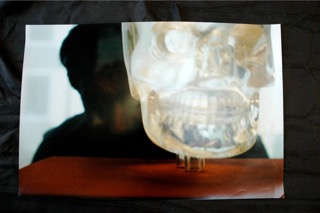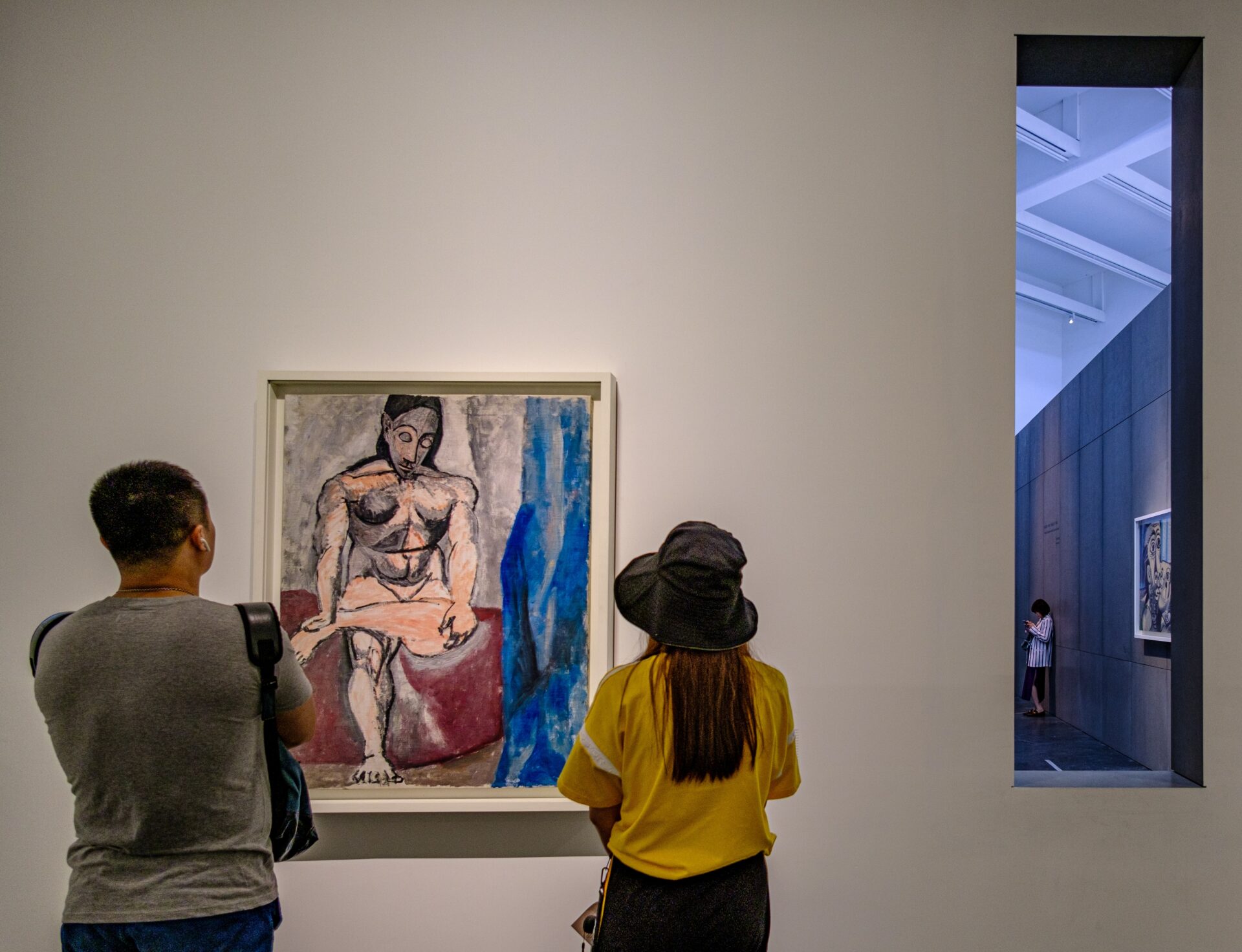Challenging Covid-19. Adapt or Dye – An Artist’s Antennae
Challenging is an educational experience, or at least can lead to an educational experience. Do we have the principles right, the facts right, the approach right? It is a practical vision.
Good Art brings in its wake an emotional response, sometimes is a missing link gathering people, paving a way to moral integrity and spiritual quality. It is a humanizing vision.
How do artists respond to a challenge? Great art is autobiographical, grounded in feeling. Artists use what they see and experience. Like ants their antennae are twitching as to what is around them. Zola saw what was happening around him, a pandemical anti-Semitism – he was moved to write his formidable J’Accuse. It caused such rethinking that it split France. It changed the military forever. And it freed an innocent.

Two paintings have moved me to tears instantly. Rembrandt’s Oath of the Batavians (c.1662). A challenge to authority, but more – it is Shakespearian in its evocation of inner emotions, of Civilis and those around him. Is the futility of it depicted? Of not rising to challenge, to rethink but keeping to an oath. Are the Batavians fearful, expecting failure, a distracted herd mentality? Hamlet’s oath to his father’s ghost leads to his inability to rethink or indeed feel and to inevitable death. His goal remained fixed, unchallenged. And Shylock’s oath in Heaven? With Shylock Shakespeare has created one of his most favored characters who while rising to the challenge, is defeated by those that don’t rise to the challenge. Shylock and the Merchant of Venice challenges us to rethink about appearance, reality, truth, love and it is anything but an anti-Semitic play. Its wake envisages freedom of slavery and much more. Tantae molis erat Shylockiam condere gentem.
I wept before Picasso’s Massacre in Korea (1951). I am not sure why. It is an outright challenge to us at many levels. For example, our vision of who massacres. That is, the deeper emotional wake than the brilliant visual writing Picasso uses to convey his emotion – perpetrators of massacre are not human. Period. There is no revolutionary attempt by Picasso unlike Zola, or Hamlet or Shylock. But the inner feelings being explored, like Rembrandt. 20/20 dual vision.
Another artist of quite a different time and place response to the lack of vision by authorities is that of John Muafangejo who during the Namibian troubles created Oniipa rebuilding of printing press (1981) with the words in the image of “ …was bombing upon 19.11.80 and destroyed twice by Master no body but it is not stopping people….’ Master No body was not a political polemic. There is no ressentiment – no finger wagging, no blame, no I know better.
 Traditional vision (backed we are told by scientific evidence, whose? which?) to Covid-19 is everywhere – adapt or die. Adapt to lockdown, to social distancing, to hand-washing. But it’s a blurred vision – one eyed, like Rembrandt’s Civilis. The vision of the public is more revolutionary and a different one. Take 25-year-old Ugandan motor bike taxi driver Richard Kabanda who having no work is worried about feeding his family. “We are going to die inside our homes because we will run out of food yet we’ve been told not to leave our homes.” “Our candles are Molotov” cocktails, ordinary Lebanese chant in response to the lockdown and death of the 26-year old protester mechanic Fawaz Fouad Al-Samman. Banks have been burnt there. It’s all over the world – a similar revolutionary spirit to the oath ‘adapt or die’ of containing Covid-19. But revolution extends, with kindness by those in power too. Jonathan Lewis, captain of the nuclear hunter-killer submarine HMS Trenchant, and much older than a twenty year old, allowed a party for his troops during the lockdown. He has been dismissed. Brett Crozier, commander of USS Theodore Roosevelt, a nuclear-powered aircraft carrier was removed from his command because he revolted by expressing concern in a letter for the health of crew members exposed to coronavirus. As he left the ship following his dismissal, Crozier was cheered by his former crew. In Lebanon protesters are also cheered. They tried to adapt and dye.
Traditional vision (backed we are told by scientific evidence, whose? which?) to Covid-19 is everywhere – adapt or die. Adapt to lockdown, to social distancing, to hand-washing. But it’s a blurred vision – one eyed, like Rembrandt’s Civilis. The vision of the public is more revolutionary and a different one. Take 25-year-old Ugandan motor bike taxi driver Richard Kabanda who having no work is worried about feeding his family. “We are going to die inside our homes because we will run out of food yet we’ve been told not to leave our homes.” “Our candles are Molotov” cocktails, ordinary Lebanese chant in response to the lockdown and death of the 26-year old protester mechanic Fawaz Fouad Al-Samman. Banks have been burnt there. It’s all over the world – a similar revolutionary spirit to the oath ‘adapt or die’ of containing Covid-19. But revolution extends, with kindness by those in power too. Jonathan Lewis, captain of the nuclear hunter-killer submarine HMS Trenchant, and much older than a twenty year old, allowed a party for his troops during the lockdown. He has been dismissed. Brett Crozier, commander of USS Theodore Roosevelt, a nuclear-powered aircraft carrier was removed from his command because he revolted by expressing concern in a letter for the health of crew members exposed to coronavirus. As he left the ship following his dismissal, Crozier was cheered by his former crew. In Lebanon protesters are also cheered. They tried to adapt and dye.
Revolution is in the air. People are hungry. It’s no use offering them ‘cake’ (even in the future) in ones deep ignorance and privilege. The vision has to change. Popular films like the Hunger Games say it all about hope and revolution and hunger if a vision does not change. The 2019 Todd Phillips’ The Joker expressed the issue of rebellion and frustration and lack of vision.
 Can artists contribute to a new vision? Should they even? What do they see more clearly? But perception of a good artist is not the exterior world, it is what lies beneath the surface to feeling, to understanding so that a new vision can be worked out by others. Let a dye run through to change the original. Good art is the artists’ erlebnis – the lived emotion expressed by an artist – made permanent and grounded in feeling. It is also always and has always been cosa mentale and never mere decoration (as much of current art is).
Can artists contribute to a new vision? Should they even? What do they see more clearly? But perception of a good artist is not the exterior world, it is what lies beneath the surface to feeling, to understanding so that a new vision can be worked out by others. Let a dye run through to change the original. Good art is the artists’ erlebnis – the lived emotion expressed by an artist – made permanent and grounded in feeling. It is also always and has always been cosa mentale and never mere decoration (as much of current art is).
To see what signals an artist’s antennae emmits, if they are the frontrunners of society, we have to understand what art is. It is not propaganda. It is not decoration. Art is a biological function of mankind or at least an Adaptive function. It is a form of writing. It predates language. All these questions about art were examined in Cubism, a revolution in vision which pervaded all thoughts of life around 1900. And continues to the present. It is a new way of looking at the world still not understood.
Traditionally, the capacity to produce art has been seen as an outgrowth of other human capacities, rather than a trait that has evolved for that purpose. Art is a pre-linguistic form of communication, a way of transmitting information reliably, and may itself have been an early form of writing. The ability to represent objects and ideas in the form of physical images and artifacts may have existed prior to language, as a form of symbolic communication. But a work of art has a dual existence. Once completed it is an object, with an existence independent of its creator. But the secondary existence is that, when it works, i.e. is recreated in the mind of the viewer, it communicates that which moved the artist – the erlebnis. To put it another way the lines, the colours, and to some extent the materials are there to be ‘read’ by the viewer who then (ideally) recreates that which the artist intended. And that brings out feeling, and change. The viewer of an art work is not a passive onlooker, nor can we be passive with Covid-19. Art is intended to communicate from artist to reader, the artist’s beliefs and emotions.
We need to understand, and perhaps the artists will help us to do this, the feelings of ALL those affected by Covid-19 to find a proper solution to it and to society now affected – and it must be a game changer. Lockdown should give us for example a small insight as to what it is to be in prison, what a prisoner feels. The artists depth and vision can enrich our understanding of our world. Our ability to respond. To change the vision by adding a new dye.
The revolution is here – things cannot be the same as before – good artist’s antennae will be a guide to a new vision to be considered and boldly embarked upon. After all at the end of WWII with its devastation the NHS was created.
An idea. There appears great relief in receiving Aid in any form. In Malawi 35,000 Malawi Kwacha is being paid monthly to about a million people. Can countries create a C-S fund (Citizen-Sovereign Fund) which puts billions into the pockets of its citizens for help, for projects much like the UK’s CBILS and CSBILS funds. But by taking say a 10% in the business and putting that 10% into this C-S Fund. And funding it by special taxation (tax exiles) or perhaps even (which I like) eliminating potentially useless military spending (like an aircraft carrier) which is billions, and will become obsolete. As a fund it would ensure the benefits go to society as a whole. Implementation may be in stages or immediate. Who knows maybe that $400 dollars to the person which saved a life, a family may be the billionaire of the future who will remember and give back.
Change will come, possibly revolution. One hopes what the mind will shape it to is kindness for the most oppressed. Change for assistance. Trust. Adapt or die must shift to Adapt or dye and must mean any adaption should contain the strands of kindness otherwise it could be deadly too.
This article was authored by Orde Levinson, Artist and Writer, Magdalen College, Oxford University, United Kingdom



